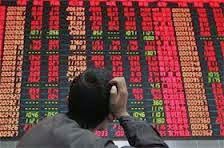
Treasury, Fed, CME & HFT Community
Since there seems to be a fundamental lack of knowledge lately regarding market crashes, I thought I would explain what happened in the epic bond market crash of last year. It seems Treasury along with the Fed and various other players from the CME and the large financial institutions have been searching for answers regarding what caused the October 15th crash in bonds.
Markets Don`t Crash Up!
First of all it wasn’t a crash, this is the misnomer in how mainstream financial media portrays the bond market. A market cannot crash if it goes up, it is bond prices that the financial media should concentrate on not the bond yields. Think in terms of bonds as assets like stocks, ever since global ZIRP bonds have become assets just like stocks. Bonds are played just as much for price appreciation since the ZIRP era began as they are for yield returns.
Price Appreciation versus Yield Returns
For example, GE stock owners could care less about the lower yield returns if their stock doubles and triples in value over the course of a year. And in the case of the German 10- Year Bund nobody is complaining because they were receiving a paltry .05 or 5 basis point yield return on their investment (which was the case a couple of weeks ago) when the price of the German 10-Year bund has appreciated so much over the past 14 months.
Therefore don’t think of the bond market in terms of yield. Think of the bond market in terms of price appreciation. The bond market didn’t crash on October 15th, it went parabolic in price appreciation, and bondholders practically wet themselves trying to execute sell orders on that morning to take advantage of their gift from Heaven after the shorts were squeezed on that momentous day.
Bonds have morphed into Stocks
Prices are a relative thing, today the price and yield might not seem like that big a deal on the 10-Year US Bond yielding 1.86%, but for bondholders who bought these bonds at the beginning of 2014 when the yield was 3%, or mid-year at 2.5%, or earlier that fateful morning at 2.20%, to wake up and have these same bonds appreciate in price with an equivalent yield being 1.86% in a matter of hours, this represented a real relative take profits moment if there ever was one for bondholders in their respective portfolios. I am describing the bonds in terms of yields just like the financial media because this is how readers can identify with the market. If I described these moves in terms of price given how bonds have been portrayed for most of the readers by the financial media it might confuse readers. Just keep in mind that when yields go lower this is not a bad thing for bondholders because as the yields are going lower this corresponds with the prices of the bonds going higher. Again think of bonds as an asset like stocks, which is what they have become in the insanity which central banks have created in a ZIRP world.
Remember when Bonds were actually serving as a Bond Function in Markets?
Theoretically in a normalized bond market with normalized interest rates bonds trade in a price range and the 10-year bond has a yield of 3.5 to 4.5%, and then yes bondholders are in this trade to take advantage of a hedged, balanced portfolio with a steady yield which nicely offsets their more volatile brethren in the equities market. So these investors in a normalized market are playing bonds for the steady yield returns and safe haven aspect of the investment. However, those days are long gone in financial markets since ZIRP went into effect globally! What bonds were intended when originally conceived as an asset class, and what they represent or how they are being used by investors today is one gigantic paradigm shift in financial markets. The way they are being used today is only possible with major central bank dysfunction in monetary policy. Central banks have completely altered the landscape of bond markets, and in effect changed the asset class to be exactly like stocks. So there no longer is a natural market hedge in a portfolio by owning bonds, they have in essence been turned into stocks by the central banks extreme monetary policy initiatives.
October 15th, 2014
I have set the background for this story, so now I will describe what happened on that fateful day. So this was the time of the Ebola outbreaks in the United States. Also the bonds were bid all year in 2014 starting at a 3% yield and perceived as a good value going into 2014. But the bond market really changed when the ECB lowered their fed funds rate equivalent several times in 2014 to devalue the Euro currency, and signaled to financial markets that they were going to embark on their own QE Bond buying program. Once the ECB went to essentially zero for borrowing and signaled to market participants QE was on the way, investors really started to buy bonds at an even more feverish pace in 2014.

